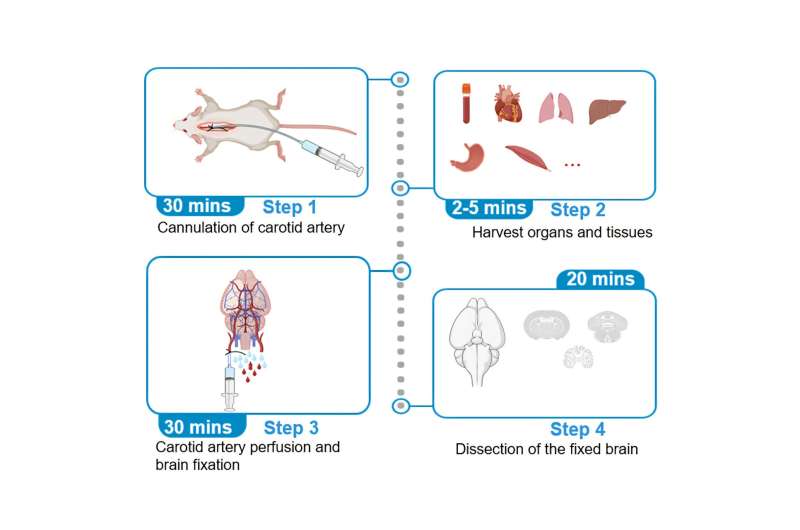Traditional techniques in neuroscience animal studies preserved the entire body, making it impossible to study living tissues from the same animal.
The new method allows researchers to conduct multiple types of analyses—such as histology, functional and molecular studies. It uses the fixed brain and other unfixed tissues from one experimental animal without the need for numerous animals.
“This dual-preservation method represents a significant advancement in animal research, maximizing the scientific value of each model while reducing the number of animals needed for comprehensive studies,” said Xiaodong Zhang, professor of cardiovascular medicine and corresponding author of the study.

